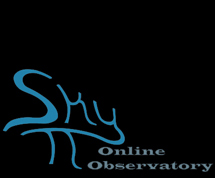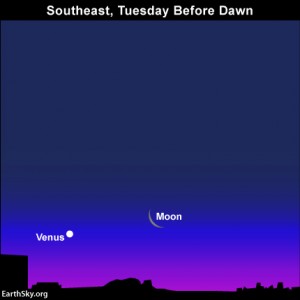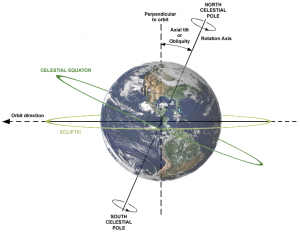Waning Moon and Venus couple up before sunrise January 28
- January 25, 2014
The brightest and second-brightest luminaries of nighttime – the moon and the planet Venus, respectively – will be putting on quite a show in the early morning hours on January 28 and 29. No matter where you live worldwide, get up some 90 to 60 minutes before sunrise. Look low in the southeast – or in the direction of sunrise – to observe the attractive morning couple.
Rising times for the sun, moon and Venus in your sky
If your sky is clear, there is no way to overlook Venus, the most brilliant of planets, in the predawn and/or dawn sky. Look first for the thin waning crescent moon, and then seek for the exceptionally bright star-like object in close vicinity to the moon. The moon and Venus are visible to the eye because these worlds reflect sunlight.
When can you see earthshine on a crescent moon?
Moreover, the moon and Venus show the whole range of phases in Earth’s sky. In fact, if you observe Venus in a telescope at dawn tomorrow (January 28), you’ll see that the crescent phase of Venus very much resembles that of tomorrow’s crescent moon.
Understanding moon phases
Yet, the crescent Venus is actually waxing toward full while the crescent moon is waning toward new. In fact, the moon will turn new on January 30, to usher in the second supermoon of January 2014. At that time, the moon will move out of the morning sky and into the evening sky.
Second supermoon of the month falls on January 30, 2014
Venus, on the other hand, won’t reach full phase until October 25, 2014. At this time, Venus will transition out of the morning sky and into Earth’s evening sky.
Be sure to catch the beautiful pairing of the moon and Venus before sunrise on January 28 and 29. Whereas the moon will leave the morning sky after a few more days, Venus will remain the dazzling morning “star” until October 2014.
Courtesy EarthSky




